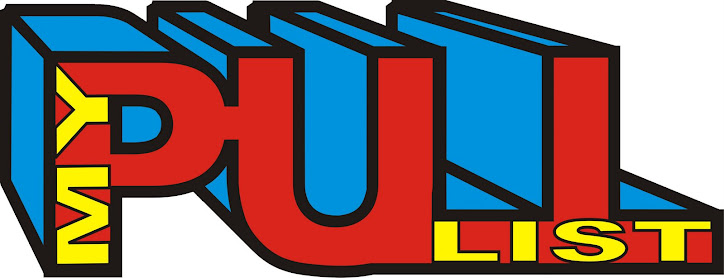Comic books for the week of Wednesday, October 8, 2008:
Action Comics #870 (DC)
Even though I haven't read this issue of Action Comics, I have read the huge spoiler on comic book news web sites. I won't post it here. If you haven't read it and can't wait to read it, you shouldn't have any trouble finding it on the comic book news web sites.
I haven't made final arrangements with the store manager of my old comic book store, to begin picking up my comic book titles from his home. He just got back from vacation, so within the next week I'm hoping to get back on schedule. Until then I will blog on general comic book topics to stay on schedule with new posts.
Since last week I blogged on my favorite comic book trade paperbacks, I thought I would blog on my favorite non-fiction book on comic books. Right now I'm reading Reading Comics: How Graphic Novels Work and What They Mean by Douglas Wolk, published by Da Capo Press in 2007. It is a book on comic book theory and criticism. I'm only 75 pages into it so I will save a review of it for another post. While readers may not agree with every opinion of the author, he does present some interesting ideas. Part of the beginning of this book includes a little bit of comic book history.
For me, any non-fiction book about comic books begins with Curt Swan: A Life In Comics by Eddy Zeno, published by Vanguard Press in 2002. Curt Swan has always been my favorite comic book artist, of my favorite comic book character, Superman. His clean style in a conservative era, for a conservative publisher, was still able to show a full spectrum of emotions on the characters' faces he drew. I would call this book an "art" biography, because not only does the book explore Swan's life, but it covers the development of his art style, and the inkers he collaborated with. Zeno interviews colleagues, family and friends to gain a well rounded picture of Swan's life and personality.
If you are looking for a book that gives a good overview of the history of the comic book history, try Men of Tomorrow: Geeks, Gangsters and the Birth of the Comic Book by Gerard Jones, published by Basic Books in 2004. the backbone of the book is the long, twisted and tragic history of Jerry Siegel and Joe Shuster, creators of Superman. Growing up in working class families, they go from rags to riches to rags for most of their lives. While they were extremely taken advantage of, the book chronicles the mistakes they made in dealing with DC Comics, not being as business savy as their bosses. My favorite chapters are the early ones chronicling the various histories of Jewish immigration from Europe, Prohibition and the rise of organized crime, the pulp magazine industry and the New York garment industry and trade unions. Jones then shows how these diverse threads of American history combine to create the comic book history.
For further reading about Superman sepcifically, try Superman: The Complete History by Les Daniels, published by Chronicle Books, in 1998. He has written similar books about Batman and Wonder Woman, DC Comic's big three. Daniels explores Superman's history from his creation, his overnight sensation, branching out to other media and licensing. The book covers Superman's history into the 1990's. My only criticism is that Daniels gives a more sympathetic view of DC Comics' relationship to Siegel and Shuster than the company deserves. But for a full exploration of Superman through the decades in multiple media, complete with pictures, this book is one to add to your reading list.
A less DC-centric book to read is Excelsior! by Stan Lee and George Mair. This book is Stan Lee's memoir of his career, from his childhood through getting hired at his cousin by marriage's comic book company as a gofer and becoming the editor out of high school. Lee explores his decades in the wilderness of comic book publishing, editing a line of derivative comic books his publisher was content to produce. It is interesting reading to explore Lee's growing dissatisfaction with his job and his desire for something better, and how both played a part in the revolution that Lee would spearhead with a stable of experienced artists in the early 1960's. Stan Lee gives his side of the the creative differences he had with two of his best srtists, Jack Kirby and Steve Ditko, but Lee is not stingy in his praise of any of the artists he collaborated with. Sometimes in interviews he has been more reluctant than necessary to call the original artists of the original Marvel characters co-creators, but Lee's contributions cannot be ignored. The best analogy about the 1960's Marvel staff was the Beatles. Like the Fab Four, Lee and the Marvel artists together were greater than they were seperately. That unique synergy of what became known as the "Marvel Method" toppled DC Comics from the pinnacle of the comic book industry.
I'll leave the list at these four for now. I hope I don't have to blog about the rest next week. I'm ready to get back into the flow of reading comic books weekly and blog about them. If so, I'll save the rest for a future post.
Send e-mail about My Pull List to mypulllist@gmail.com.
Superman Fan Podcast can be found at http://supermanfanpodcast.mypodcast.com. Expanded show notes can be found at http://supermanfanpodcast.blogspotcom. Send e-mail about this podcast to supermanfanpodcast@gmail.com.
Christmas Covers - December 21
2 hours ago







No comments:
Post a Comment